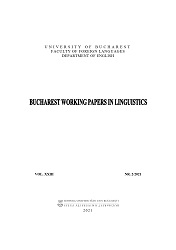An unexplained difference between reflexive and copular clausal passives in Romanian
An unexplained difference between reflexive and copular clausal passives in Romanian
Author(s): Alexandra CornilescuSubject(s): Language studies, Morphology, Syntax, Lexis, Semantics, Comparative Linguistics
Published by: Editura Universităţii din Bucureşti
Keywords: reflexive passive; copular passive; expletive subject; free inversion;
Summary/Abstract: Romanian possesses a reflexive passive structure, the se-passive, where se is a reflexive clitic, and a copular passive, formed with the auxiliary fi ‘be’. For both passives, the passivized object is either nominal or clausal. While for nominal objects there is a balanced distribution of the two passives, with clauses, there is a sharp difference of acceptability between clausal se-passives and clausal fi-passives. Clausal se-passives occur with any transitive verb and sound perfect. Clausal fi-passives are infrequent and sometimes even unattested. The aim of this paper is to present an account of this difference, while also predicting which syntactic means improve the acceptability of fi-passives. We argue that the contrast between clausal fi- and se– passives springs from the different manner in which the features of Tense, in particular the uD feature, are checked, and show that it is only in se-passives that all the features of T are valued.
Journal: Bucharest Working Papers in Linguistics
- Issue Year: XXIII/2021
- Issue No: 2
- Page Range: 5-31
- Page Count: 27
- Language: English

